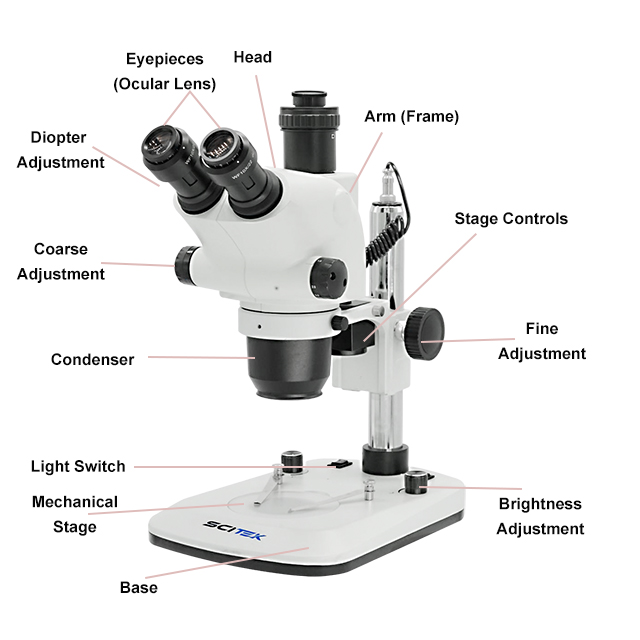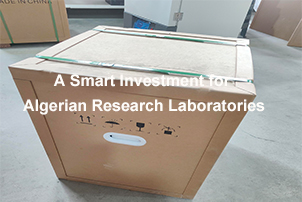A stereoscopic microscope, also known as a dissecting microscope, is widely used for observing the surface details of solid or three-dimensional specimens. Unlike compound microscopes, which are designed for viewing thin slides, stereoscopic microscopes provide a three-dimensional view at lower magnification, making them ideal for tasks requiring depth perception and fine manipulation. In the following sections, we’ll explore its common applications, unique features, and why it’s an essential tool in both scientific and industrial settings.
What is a stereoscopic microscope
A stereoscopic microscope, also known as a dissecting microscope, is a low-magnification microscope designed for viewing the surface of solid specimens in three dimensions. Unlike compound microscopes, which use a single optical path, stereoscopic microscopes use two separate optical paths to create a 3D image, giving the user depth perception and a detailed view of the specimen’s structure. They are commonly used in biology, electronics, forensic science, and quality control for tasks like dissection, circuit inspection, or observing small mechanical parts.
Basic components of a stereoscopic microscope

Understand the components of a stereoscopic microscope. A microscope has several basic parts that you need to be able to identify and use correctly. The eyepiece is the part through which you observe the specimen. A simple compound microscope has only one eyepiece, while more complex microscopes have a binocular eyepiece. The following are the components of a microscope:
- Mechanical stage is a platform on which to place the slide for viewing.
- Arm is the part that connects the base to the eyepiece.
- Objective lens is the component that magnifies the image. There are multiple objective lenses with different magnification levels.
- There are two types of focusing knobs: coarse and fine. The coarse focusing knob is typically a large knob on the side of the microscope, used to control the distance between the objective lens and the slide. It helps you locate the specimen and perform coarse focusing. The fine adjustment
- knob is smaller and is used for precise focusing on the specimen. It allows you to make fine adjustments to the observation under the microscope.
- Light source is located on the base of the microscope, pointing toward the stage, and provides light for observing the image.
- Aperture is located below the stage and allows you to adjust the amount of light shining on the image.
How to use a compound microscope
- Rotate the objective lens: Rotate the objective lens with the lowest magnification (longest lens) to the observation position, ensuring there is sufficient space to rotate it into place.
- Place the slide: Place the slide on the mechanical stage and secure it with clamps. Observe from the side and adjust the lens closer to the slide, but do not touch it.
- Focus the eyepiece: Observe through the eyepiece and slowly raise the lens until the image is clear.
- Adjusting light intensity: Adjust the condenser to increase or decrease light intensity. Reduce light intensity appropriately when using low magnification.
- Move the slide: Move the slide so that the target area is centered in the field of view.
- Switch to a higher-power objective lens: Once the image is clear, you can switch to a higher-power objective lens without worrying about touching the slide.
- Fine-tune the focus: If the image is blurry, first move the objective lens closer to the slide, then slowly move it away until the image becomes clear.
- End the operation: After viewing, lower the stage, switch back to the low-power objective lens, and remove the slide.
How to maintain your stereoscopic microscope?
When moving the stereoscopic microscope from one place to another, do not grab the stage or eyepieces. Place one hand on the bottom of the microscope and use the rear arm of the microscope for transportation. In addition, please note the following points:
Always use both hands when moving the stereoscopic microscope.
Before moving the microscope, ensure that it is not connected to a power source.
If using immersion oil, be sure to thoroughly clean the immersion oil lens after use.
Keeping the stereoscopic microscope clean (especially the optical components) will also ensure a longer service life.
When not in use, cover the microscope with a dust cover or store it in a microscope case.
How to safely operate a stereoscopic microscope
If your microscope bulb needs to be replaced, unplug the microscope before replacing the bulb and use only the recommended bulbs. If your stereoscopic microscope uses a mercury bulb, please take extra care.
Never plug or unplug the microscope’s power cord with wet hands. Make sure to dry your hands first.
When not using the stereoscopic microscope, unplug the power cord and securely coil the cable to prevent tripping hazards or the microscope from falling off the table.
Additional tips and tricks
Here are some useful tips to consider before using a microscope:
When using a monocular microscope, it is best to keep the other eye open to avoid eye strain. Remember that when observing through a microscope, the image is inverted horizontally, so when moving the slide, the image will appear to move in the opposite direction of what you expect—moving the slide upward will cause the image to move downward, moving the slide to the right will cause the image to move to the left, and so on.
Prepare the slide using a protective cover slip.
Do not touch the central glass portion of the lens with your fingers; only touch the edges. Special lens paper is available for cleaning the lens. You may need to wear gloves.
Turn off the microscope when not in use.
Cover the microscope when not in use.
When carrying the microscope, use both hands: one hand to hold the microscope arm and the other to hold the microscope base.





Get Social